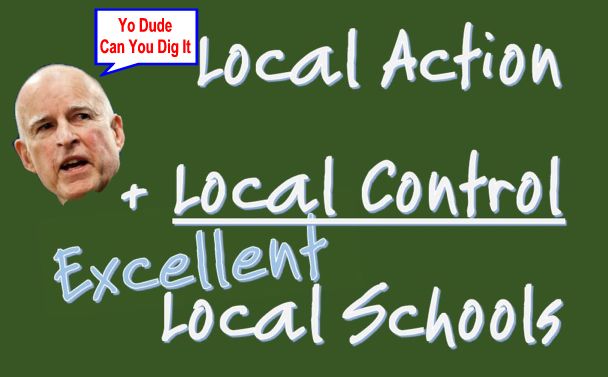In smoothing over co-locations, did LAUSD give away the farm?

The LAUSD Board voted late on Tuesday to direct the Superintendent to either more transparently assist privately operated charters in the takeover of district-owned, public facilities, or to create a fairer process, depending on what is to be believed.
George McKenna and Scott Schmerelson, both retired principals, voted against the motion, which was brought by PUC charter founder Ref Rodriguez and fellow charter champion Monica Garcia.
Garcia’s opponent in the upcoming school board election, parent Carl Petersen of Change the LAUSD, spoke up on behalf of neighborhood schools, calling Rodriguez’s bluff in the motion’s claim that Prop 39 presents an opportunity for district and charter schools to collaborate.
“I’ve never heard a parent say, ‘Gee, I really hope a charter co-locates on our campus next year.”
He said the situation reminded him of a song lyric from his youth: “You say it’s raining, but you’re pissing down my back.”
George McKenna and Scott Schmerelson, both retired principals, voted against the motion, which was brought by PUC charter founder Ref Rodriguez and fellow charter champion Monica Garcia.
Garcia’s opponent in the upcoming school board election, parent Carl Petersen of Change the LAUSD, spoke up on behalf of neighborhood schools, calling Rodriguez’s bluff in the motion’s claim that Prop 39 presents an opportunity for district and charter schools to collaborate.
“I’ve never heard a parent say, ‘Gee, I really hope a charter co-locates on our campus next year.”
He said the situation reminded him of a song lyric from his youth: “You say it’s raining, but you’re pissing down my back.”

Petersen represented parents throughout the district whose children attend co-located schools when he called on LAUSD’s charter division to look for alternatives that put protecting neighborhood public schools ahead of accommodating charters.
But with the exception of McKenna, none of the board members seemed to view the measure in the context of the threat by the charter groups to privatize the school district. Although they reassured each other that the polcy would remain in their hands, not the superintendent's. In discussion, Monica Ratliff acted like a mediator, trying to find a way to get unanimous approval for a measure she said lays out a In smoothing over co-locations, did LAUSD give away the farm? — PS connect:
But with the exception of McKenna, none of the board members seemed to view the measure in the context of the threat by the charter groups to privatize the school district. Although they reassured each other that the polcy would remain in their hands, not the superintendent's. In discussion, Monica Ratliff acted like a mediator, trying to find a way to get unanimous approval for a measure she said lays out a In smoothing over co-locations, did LAUSD give away the farm? — PS connect:





/cdn0.vox-cdn.com/uploads/chorus_asset/file/6690689/Screen%20Shot%202016-06-22%20at%202.23.50%20PM.png)








 In essence, the secondary admission process is a “holistic-review calculus” of many factors. The majority opinion that the consideration of race at UT-Austin “is contextual and does not operate as a mechanical plus factor for underrepresented minorities.”
In essence, the secondary admission process is a “holistic-review calculus” of many factors. The majority opinion that the consideration of race at UT-Austin “is contextual and does not operate as a mechanical plus factor for underrepresented minorities.”













